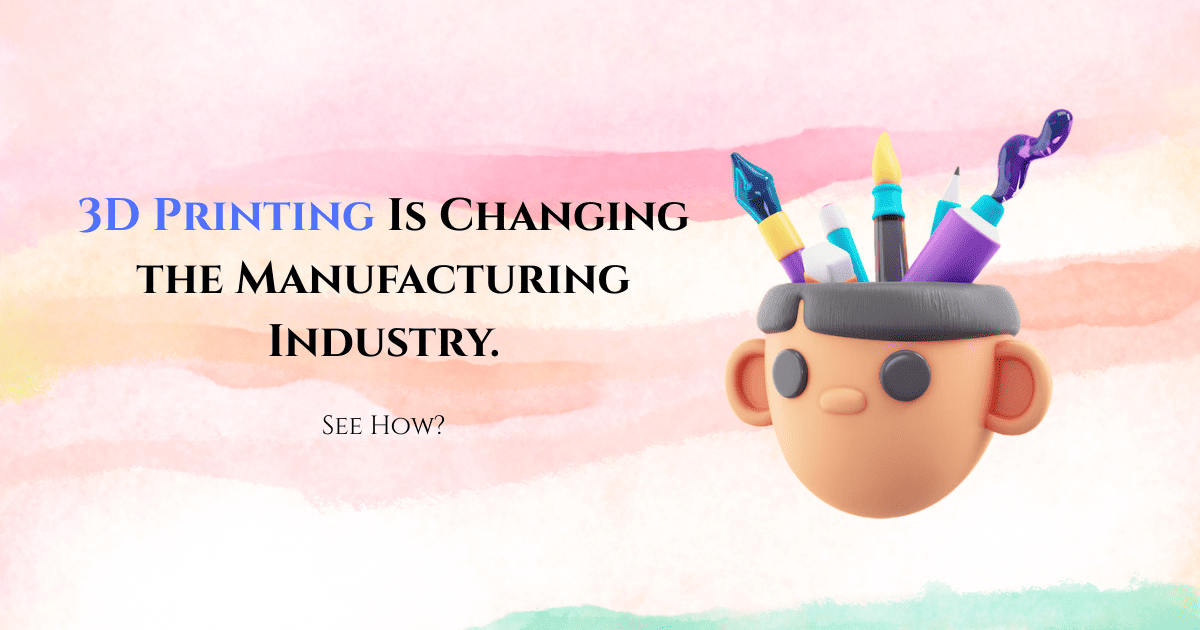3D printing isn’t just a prototype tool anymore. It’s redefining how products are made, customized, and delivered—changing manufacturing from the ground up.
What began as a tool for hobbyists and engineers is now disrupting global manufacturing. 3D printing—or additive manufacturing—is no longer a niche experiment. It’s a powerful force reshaping how industries produce goods, manage inventory, and even approach design itself.
Forget the factories filled with assembly lines and molds. The future of manufacturing may be as simple as sending a file to a printer—and watching a product take shape, layer by layer.
1. From Mass Production to Mass Customization
Traditional manufacturing depends on large-scale production to remain cost-effective. 3D printing flips that model.
With 3D printing, manufacturers can create highly customized parts or products on demand. Whether it’s a medical implant tailored to a patient’s body or a uniquely shaped car part, customization no longer breaks the budget.
This opens the door to more personalized consumer experiences—at scale.
2. Reducing Waste, Maximizing Efficiency
Standard manufacturing is subtractive: raw materials are cut, drilled, or carved, leaving behind scraps. In contrast, 3D printing is additive—only the material necessary to build the object is used.
This efficiency significantly reduces waste and makes sustainability a practical outcome, not just a talking point.
3. Prototyping Goes from Weeks to Hours
Speed matters, especially in innovation cycles. Before 3D printing, prototyping was a long, expensive process that required tooling, molds, and revisions.
Now, designers and engineers can print a functional prototype within hours. Iterate. Test. Repeat. This rapid development cycle cuts down time to market and encourages bolder, faster innovation.
4. Supply Chains Become Local—and Resilient
Global supply chains are fragile. Disruptions from pandemics, wars, or natural disasters have exposed just how risky relying on distant manufacturers can be.
3D printing decentralizes production. Companies can produce parts locally, on-demand, reducing the need for complex logistics or warehousing. The result? Faster delivery, lower transportation costs, and reduced dependency on external vendors.
5. Aerospace and Healthcare Lead the Charge
While 3D printing is impacting many industries, aerospace and healthcare are at the forefront.
- In aerospace, lightweight printed parts are used to improve fuel efficiency.
- In healthcare, 3D-printed prosthetics, dental implants, and even tissue scaffolds are revolutionizing personalized care.
These aren’t theoretical breakthroughs—they’re real, in-market transformations.
6. Reimagining Spare Parts and Inventory
What if you never had to store thousands of spare parts again?
With digital inventories and 3D printers, manufacturers can simply print a replacement part when needed. This “print-on-demand” model minimizes overproduction and streamlines logistics—especially for industries dealing with rare or legacy components.
7. Democratization of Manufacturing
3D printing isn’t just for billion-dollar industries. Small businesses and even individuals can now manufacture parts and products with minimal upfront investment. This lowers the barrier to entry for entrepreneurs and encourages innovation from the bottom up.
Garage inventors can now compete with corporations—something impossible just a decade ago.
8. New Materials, New Possibilities
Advances in materials—metal powders, biocompatible plastics, carbon fiber composites—are expanding what 3D printers can do. What began with plastic models has evolved into functional, durable, and even medical-grade components.
This diversity allows 3D printing to adapt to more industrial needs, from building homes to crafting performance car parts.
Conclusion
3D printing is not replacing traditional manufacturing entirely—but it’s rewriting the rules. What once took weeks now takes hours. What once needed mass production can now be made on demand. And what once required huge capital can now begin with a laptop and a printer.
This isn’t just a new tool—it’s a new mindset. One where flexibility, speed, and innovation matter more than scale alone.
The question is no longer if 3D printing will change the manufacturing world. It’s how fast—and how far—it will go.










